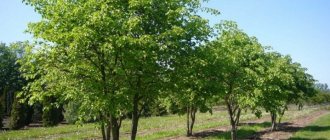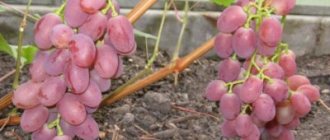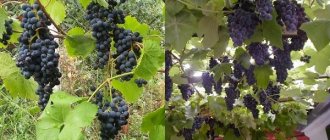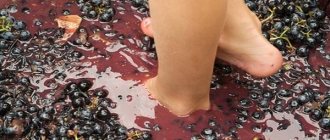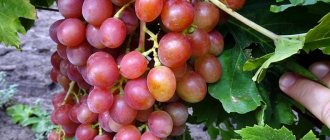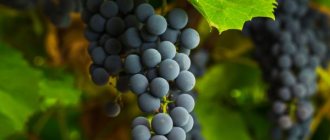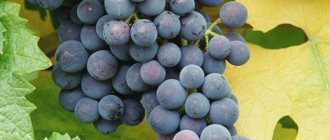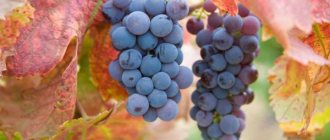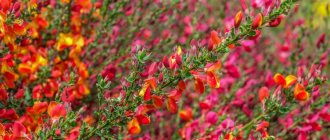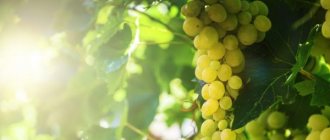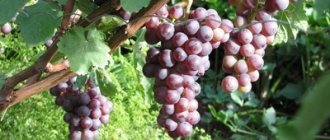What type of crown should I choose?
As a result of pruning the tree, a strong, powerful crown should be formed, allowing the tree to produce a bountiful harvest. The shape of the crown is influenced by the height of the plant and the trunk.
If the crown shape is low-standard, then form it for plants growing in the southern regions. If the height of the trunk is from 0 to 40 cm, then these are the so-called bush or non-standard forms of crowns. Use these in northern regions.
The branches can also be shaped into a bowl shape with a slight dip in the length of the branches in the center or in a bush shape.
Kinds
There are several types of peach pruning.
Depending on the goals:
- shaping - to create a strong skeleton, the desired silhouette;
- sanitary - for the treatment and prevention of diseases;
- rejuvenating - for renewing old trees;
- regulating - to control the height of the trunk, crown density, and yield.
Depending on the methods:
- pinching - gentle removal of the tops of annual shoots, used after planting;
- light pruning - removing ¼ of a young peach at 2-4 years of age;
- medium - removal of ⅓ of a plant that is more than 5 years old;
- strong - removal of ½ part of the tree for the purpose of rejuvenation or treatment.
Depending on the methods:
- to the ring - complete removal of the entire branch to its base, which looks like a ring;
- on a bud - removal of a certain part of the branch;
- for a replacement knot - removing excess shoots on the skeletal branch;
- kerbovka - cuts near the kidneys that need to be activated or eliminated.
Why do you need to trim a peach?
Peach is a fastidious tree, capable of producing high yields only if it is carefully cared for. One of the factors is proper pruning, that is, the formation of the tree crown. With its help you can provide the necessary care for the plant.
The peach will respond to pruning manipulation by timely flowering and regular fruiting of large fruits that are distinguished by high taste. The formation of a tree begins at the age of one year. The reasons for pruning are:
- the existence of sharp forks of branches;
- thickened crown, preventing sufficient sunlight from penetrating to all fruits;
- weakening of the plant due to the large number of buds;
- avoiding premature aging.
Formation of the crown of young plants
The most common way to form the crown of peach plants is by bush. A special feature of this crown is the absence of a central conductor. The seedling formed in this way has three or four main branches growing from the lower part of the plant, which allows the crown to receive a sufficient amount of light and provides a supply of wood when the stem part freezes in winter.
It is recommended to do pruning and shaping immediately after planting the fruit plant in a permanent place. On the purchased seedling it is necessary to leave only skeletal shoots, and the rest are completely removed. The central conductor is also subject to pinching. As a rule, a young plant is not able to grow much in the first year after planting, so shortening should be done to about three or four buds.
Peach seedlings react quite painfully to open cuts, so pruning must be done with the sharpest and most disinfected garden tool, and all cut areas must be treated with garden varnish.
What tools are needed?
To perform peach pruning efficiently and effectively, acquire the following tools:
- pruning shears with long handles;
- special garden knife;
- wood hacksaw with a thin sharp blade;
- paint brush.
To reduce injury to plants, monitor the sharpness of all tools and the proper level of disinfection.
Before starting work, disinfect your tools. To do this, use alcohol.
Useful properties of peach
Peach does not need any special recommendations, since it is a favorite delicacy of many people. Moreover, not only the pulp of the fruit itself is used, but also the seeds from which the liqueur - peach - is prepared.
Among the vitamins contained in the pulp of the fruit, special mention should be made of carotene (provitamin A), B1, B2, B3 (PP), B6, C, E, K. The composition contains organic acids: malic, citric, quinic, tartaric. Lots of mineral elements: potassium, iron, manganese, magnesium, copper, zinc, phosphorus and selenium.
Useful articles for gardeners and gardeners
Pruning plums in autumn - scheme for beginners.
Pruning cherries in autumn - scheme for beginners
Cherry pruning in autumn scheme for beginners
Pruning grapes in autumn 1 2 3 years scheme
Peach is not only very tasty, but also a healthy fruit. Its calorie content is no more than 45 kcal/100 g, so it is classified as a dietary product. But you shouldn’t overeat them, as this can lead to digestive upset. Under no circumstances should you eat an unripe peach raw, since in this case, stomach cramps are guaranteed, and it can even lead to serious food poisoning.
The high potassium content makes peach a miracle cure for heart and kidney diseases. After all, potassium, as you know, is an antagonist of sodium, and the latter enters our body mainly with table salt and, in case of excess, leads to edema. A shock dose of potassium quickly has the opposite effect. With a lack of potassium in the body, problems with the functioning of the nervous system also begin.
Magnesium, which is abundant in peach, also helps potassium in the treatment of heart diseases. There is even a recommendation on this matter: when your soul is not calm, when you have experienced some kind of stressful situation, you need to eat a peach, and then you will immediately feel better.
The presence of zinc suggests a number of other beneficial properties of peach. This microelement is necessary to maintain hormonal regulation, metabolism, immunity, and for the health of bones, teeth, skin and nervous system. Impotence is often caused by a lack of zinc in the body.
Peach pulp contains a lot of delicate fiber, which has a beneficial effect on intestinal motility and therefore allows you to get rid of constipation in a matter of hours. In addition, fiber normalizes the intestinal microflora and thereby helps get rid of dysbiosis.
Peach is also incomparable in maintaining our skin in good (elastic) condition, since the rare organic acids it contains allow it to retain moisture in the cells of the epidermis and also whiten the skin. Thus, peach is an excellent remedy for wrinkles. By the way, for this purpose you can make a mask from peach slices or wipe your face with peach juice mixed with milk. And if you mix peach with oatmeal or starch and regularly make a mask from this paste, you can forget about oily skin and acne.
Other parts of the peach tree are also medicinal. Thus, a decoction of flowers and leaves can be used as a bile and diuretic. The seeds have anthelmintic properties, but they must be used with extreme caution, as they are poisonous.
Types of pruning
The plant is pruned for different purposes. The types of this manipulation are divided into the following trimmings:
- Economic pruning – serves to remove dead, dry branches. When doing this kind of pruning, remove branches with damage - breaks, bends, cracked bark, delaminations.
- restorative pruning if the tree has been damaged by frost. Then restore its crown. This can be done if you carry out a thorough inspection of all branches and identify dry and non-viable ones - remove them.
- Detail pruning serves to shorten branches to approximately 1/2 the length of older branches. You can also intensively thin out the branches.
- contour pruning by removing the outer branches of the tree, thereby eliminating their spread in width.
- restorative-formative pruning 1 year after the rejuvenating pruning was carried out. In this case, shorten the entire length of the branch by 30-50%.
- differential pruning only on the upper branches in order to thin them out.
Formative
The main purpose of formative pruning is to stimulate the growth and development of the tree. After its completion, the tree’s nutrition is balanced, and the crown acquires optimal sizes and shapes. Young shoots become more powerful, which directly affects the yield and taste of the fruit.
Pruning recommendations:
- When forming the crown of an adult tree, keep in mind that in the spring the branches are pinched, the point of which is at a height of no more than 0.4 m. As a result, the plant will form a second wave of shoots.
- Tree formation should begin at the age of two. Moreover, as the tree grows, leave about 7-8 branches in the crown, which will be the main ones. Such a plant should be fully formed by the age of 5, maximum 6 years.
- You can form the crown in the shape of a bush. Prune for the first time immediately after planting. Read about fall planting here. Then in the second year, leave only four main branches with an obligatory central one. These branches will be able to produce a harvest in just two years.
- In subsequent years, up to the fifth, prune the branch approximately at the level of the neck. Every year it is necessary to leave about five branches capable of bearing fruit from the tree, and also leave an additional two shoots for replacement.
Watch the video about how formative pruning of peach is carried out:
Restorative
Perform this type of pruning only if the tree has been exposed to intense frost during the winter. Perform in spring or autumn. Mainly for those plantings that have suffered intense frosts or were damaged by disease.
Regulatory
Regulatory pruning can be carried out in any season in order to maintain the fruiting of the tree and the number of ripening fruits on the branches.
This must be done because an excessive number of ringlets are formed on the tree. Just cut off the oldest ones. This manipulation will allow you to adjust the period and duration of fruit formation on the tree.
For control pruning, shorten young branches that reach a length of more than 1/2 m. Choose those that protrude sharply from the overall shape of the crown.
Rejuvenating
Perform this type of pruning on an adult tree in order to rejuvenate it. This allows you to prolong the fruiting process.
During this procedure, remove old branches from the tree, leaving young branches in their place, aged 2, maximum 4 years. It is allowed to leave a top that grows from the bottom of the old shoot.
If rejuvenating pruning of a mature tree has not been carried out for a long period of time, then it will be necessary to more intensively remove branches and even possibly part of the tree.
Peach pruning technology
Types of shoots
A properly pruned branch looks like this
Before you start pruning a peach tree, you need to clearly understand what types of shoots are formed on it and how important they are for future fruiting. The peach tree produces shoots of six different types:
- Growth. Only leaves and growth buds are formed on them. Cut them in the fall so that in the spring they do not take away nutrition from flower ovaries and future fruits.
- Mixed. Both fruiting and vegetative buds are formed on thick branches. If you want to get a harvest next year, do not prune them under any circumstances.
- Bouquets. Small (25–30 cm) fruiting shoots with small peaches and many clustered vegetative buds. Most of the fruit falls off. They are cut in the fall on young trees (up to 3 years old), then left alone.
- Fruit (generative). Also not long (about 15–20 cm). Despite the name, they bear fruit poorly. Most often, the ovaries fall off. The fruits, if they ripen, are small, without pronounced taste. After one fruiting, they most often die off during the winter.
- Tops. The shoots never bear fruit. If the tree did not winter well and is frozen, do not cut them in the fall. This is a good basis for the formation of the crown for next year.
- Summer (premature). Formed on mixed shoots at the end of summer. There is no harvest. In winter, they will most likely freeze, since the branches are very thin and delicate.
Peach pruning diagram - video
Formation of a cup-shaped crown
Cup-shaped (fan crown) is most popular among gardeners
If the peach was planted in the spring, pruning should be done in the same fall. This is how the future crown of the correct shape is laid.
- The top of an annual seedling is pruned at the end of the season to a height of about half a meter. The remaining part of the trunk must certainly have two strong branches or at least developed buds directed in diametrically opposite directions. They are left untouched, but tied to thin slats so that the angle between them and the trunk is about 45º. From all other side shoots, one upper bud is cut off.
- Ideally, in the second year, both side branches should grow to 50 cm. If this happens, the central shoot is cut to the place where these branches depart from the trunk. If their length is only 35–40 cm, cut off to the last growth or triple bud, which is as far as possible from the trunk. They select 2–3 more developed shoots on these branches and tie them to the same rail. All other branches are cut to the leaf closest to the main shoot.
- Next fall, the main branches are shortened by about a third. Then 3 more shoots are selected from them and all growth buds directed downwards are removed from them. The selected branches are also tied to the rail, the remaining ones are cut to the first leaf.
- If you properly cared for the peach tree and formed the crown, in the fourth year you will reap the first harvest. Since peach is most often planted near a wall, when pruning, be guided by it. Cut off all shoots directed perpendicular to the wall to the base, except for those on which flowers bloomed in the spring. Leave a leaf or two on these branches. Particular attention is paid to the lateral growths formed last year, since it is on them that the peaches ripen. Three shoots are selected for them - at the very base (for replacement in the future), in the middle (reserve for the first) and at the top (to increase the length of the fruiting branch). All other young shoots are cut off: those directed downwards - to the growth point, upwards - to the second leaf.
In this case, you will get the most popular peach crown among gardeners - cup-shaped, or fan-shaped. The lower tier rests on 4 skeletal branches, the upper - on 5. The optimal number of fruiting branches is about 80.
A tree four years after planting is considered fully formed. Then every year you will only need to maintain its crown in proper condition. In the fall of the fifth year and subsequent years, you will be required to do the following:
- removing dried and broken branches,
- pruning fruiting shoots by an average of one third,
- adjusting the height of the tree so that it does not exceed 3 m,
- removing all fairly thin branches if the winter promises to be snowy.
Therefore, you will mainly be required to shorten and thin out. The first is necessary, since overgrown fruiting branches contribute to the exposure of skeletal shoots. Depending on the growth of the peach over the past summer, the shortening can be weak (from a fifth to a quarter of the length of the branch), moderate (a third) and severe (half). Thinning is cutting off useless branches to the point of growth on the shoot so that the tree does not waste energy on them next spring. Also, all diseased and dried branches are subjected to this procedure.
The improved cup shape is extremely popular in Bulgaria, Greece and France. It is no different from the option described above, but its branches are located closer to each other. There remains a distance of 10–15 cm (in rare cases 20 cm) between them. This crown is more powerful; branches are less likely to break from the wind or under a thick layer of snow. This is especially true for farms growing peaches on an industrial scale, when it is not possible to plant every plant against a wall.
- To form such a crown, the central shoot is immediately cut off, leaving 3-4 branches, evenly spaced and directed in different directions. Ideally, they should extend from the trunk at an angle of about 45º. Next, the plant is pruned as described above.
- Every fall, the upper central branch is pruned again. If shoots have formed from it in the summer, no more than two growth buds are left on them.
- The optimal number of branches for an abundantly fruiting tree in this case is about 90. If the harvest is insignificant, you can leave from 100 to 150 fruiting branches for the winter.
- Cut branches must be burned. All sections are treated with a 0.05% solution of Bordeaux mixture or a pinkish solution of potassium permanganate for disinfection and covered with garden varnish or beeswax. At worst, even oil paint will do. To protect against rodents in winter, wrap the trunk in the place where the thickest branches are cut with a thick cloth, placing a layer of straw 2-3 cm thick under it, and securely fix it.
Some gardeners, in order to radically rejuvenate the peach, advise every fifth year to cut off all the shoots growing from the first year after the previous similar pruning. They note that in this case, productivity increases significantly. But this method is recommended for summer residents with experience. Otherwise you will simply destroy the plant.
How to form a bowl-shaped crown - video
https://youtube.com/watch?v=NmS2yVFRdOw
Bush-shaped crown
Less popular, but also found, is a bush-shaped crown. Among its advantages are uniform illumination of all fruiting branches, high yield, frost resistance and ease of care and harvesting.
Forming a peach crown in the form of a bush requires more effort, but it is also more convenient to harvest.
In this case, there is no clearly defined central shoot; the crown is formed on the basis of 3–4 lateral branches extending from the lower quarter of the peach seedling’s trunk. A seedling that has at least 6–8 side shoots is suitable for this procedure. Crown formation looks like this:
- For a seedling planted in a permanent place in the spring, the central shoot and all the upper lateral shoots are cut off in the fall to the growth point. Only 3–4 branches are left at the bottom of the trunk with 5 growth buds on each.
- Next fall, these main shoots are cut back by about a quarter or a third, depending on how much the peach has grown over the summer. All shoots that look down are cut to the growth point; vertical shoots are not touched.
- A year later, 6–8 are selected from the vertical shoots left on each of the main branches, which should bear fruit next summer. All others are cut to 1–2 sheets. This is also done with the shoots in the center of the bush, formed in the place of the trimmed central shoot.
- In the autumn of the fourth year, you only need to select new fruit-bearing branches from those that grow at the right angle to the trunk. Those growing horizontally and downwards are cut to the growth point.
When properly pruned within 3–4 years, the tree has a spherical shape and a height of about 2 m.
What time do you prune a peach?
Each type of pruning has its own, strictly defined deadlines. They must be adhered to, otherwise it will negatively affect the fruiting of the tree and change its vegetation.
The totality of trimmings can be divided into two types:
- complete cutting of the branch;
- partial pruning.
Spring pruning
Start spring pruning at the end of February and continue into the spring. It is necessary to shorten the shoots at this time in order to form a wide, branched crown. The procedure must correspond to the selected crown type.
The basic rule is to cut approximately 1/2 or 1/3 of how much the branch grows in a year. Also, be sure to take into account that on first-order branches you need to make more cuts than on second-order branches.
When pruning, make sure that the young growth is preserved as intensively as possible. After all, it is the branches that are 2-3 years old that produce the best fruits and in large quantities.
In order for the peach to recover faster after the pruning process, it must be started when the internal juices in the tree have not yet begun to move.
In the video below you can see how peach pruning is done in spring:
Summer pruning
In summer, cut off those branches that have either completely dried out or have begun the drying process. Eliminate branches that are losing color. They tend to grow incorrectly, that is, towards the center of the crown.
The basic rule for summer pruning is that it should be carried out in June or early July. During this period, a seed is laid inside the fruit.
Autumn pruning
Many experienced gardeners recommend pruning peach trees in the fall. This is due to the fact that the plant will have a longer period for its recovery. This way you can expect more intense flowering and, accordingly, fruiting.
It is worth performing autumn pruning in those regions where there is a warm climate. The autumn period here is usually warm, and frosts occur at the beginning of winter. Therefore, before the onset of the first frosts and cold, the tree has time to fully recover after the procedure.
The basic rule for autumn pruning is its start time, which occurs approximately from mid-September to the end of October. At this time, the harvest from the trees has already been fully harvested.
Pruning carried out in the autumn in warm regions allows you to speed up the process of fruit development.
See the following video for the rules for autumn peach pruning:
It is important to never do fall pruning in areas with a temperate climate, as the tree will most likely not be able to survive the winter and will die.
Do you prune peach trees in winter?
In winter, peach pruning is not carried out - this can destroy the plant. The only thing that can be called winter pruning is that spring pruning can begin in mid-February.
In warm regions, spring comes much earlier and at this time the likelihood of severe frosts disappears - so you can start pruning.
Why is autumn pruning necessary?
This is a mandatory agrotechnical event. Pruning is carried out in spring, summer or autumn. Moreover, all stages are important. In the spring, the crown is formed, damaged branches are removed in the summer, and the tree is prepared for winter in the fall.
To properly trim a peach in the fall, the following tasks should be solved simultaneously:
- Shortening branches.
- Elimination of broken shoots.
- Identifying and pruning diseased branches.
Experienced gardeners say that no more than 8 dozen branches should remain on the tree. This amount will allow the growth energy to be properly distributed in the spring. The nutrition received from the ground will go, first of all, to fruit-bearing branches and fruit ovaries.
Pruning by year
When pruning, be sure to consider the age of the tree. Because in a young specimen, all pruning efforts should be aimed at ensuring that it grows and develops. Next year, prune to stimulate fruiting.
For more mature trees, prune to form the crown, prevent thickening, and increase the number of inflorescences formed, and, accordingly, fruits. For old peach trees, pruning should be carried out in order to rejuvenate and maintain fruiting processes at a certain, optimal level.
Immediately after landing
As soon as you have planted a young peach tree seedling (about spring planting of peach trees is written here), do the first pruning for it. To do this, simply shorten the central shoot, that is, the top of the plant. Also shorten all remaining side branches of the seedling by approximately 1/3.
1 year
An annual plant also requires pruning. The main goal is the correct formation of the crown of the future adult tree. Make sure that the skeletal branches are positioned correctly and at the right angle.
At one year of age, shorten the branches to approximately 1/3 of their total length. Make sure that the shortening is not carried out to a distance of less than 1/4 of the total length of the branch.
Before you start pruning, measure the new growth. If, for some reason, it is quite weak, that is, it has not grown more than 30 cm, then in this case you can not prune the young tree.
2 year
During the plant's second year, prune in the same way as the previous year. This is important to form the crown correctly. By repeating this pruning, you will really form the desired crown for the plant and prepare it for abundant fruiting in subsequent years.
The gardener provided a video about pruning a peach in its second year:
3 year
As the plant reaches its third year of growth, it enters a period of active fruiting. Peaches are produced abundantly only on young branches and those that have undergone the pruning process.
Pruning recommendations:
- It is important to ensure that the tree does not thicken or age. Each such branch takes away strength from the tree, so every year an unkempt peach will bear less and less fruit.
- From now on, change your tree pruning strategy. The most important thing now is to focus on the need to remove the weakest branches. In addition, remove frozen branches.
- At this moment, it is necessary to ensure that the tree crown does not thicken. To do this, cut off excess branches over the entire surface of the tree.
- The basic rule in this case is that if new young branches grow more than 0.5 m in length, then they need to be shortened. This will result in accelerated formation of new growth.
Subsequent years
In all other subsequent years, take into account both the age of the plant and its fruiting activity. While the peach is young enough, repeat the previous pruning, which is typical for the third year of plant growth.
When a tree gets old, be sure to rejuvenate it. In this case, carry out pruning that follows the following rules:
- Be sure to shorten the skeletal parts of the branches by 1/3 of their total length;
- Reduce the tops that remain on the tree until approximately 1/2 m remains.
Rejuvenation of trees after 8 and 10 years
Trees need annual anti-aging pruning after reaching 8 years of age if the peach was grafted, and 10 years of age if the plant was grown independently. At the very beginning of the procedure, all dried, damaged and infected shoots are removed, then the old branches are shortened to 3-4-year-old wood, cutting off parts of the tree that are no longer capable of high-quality fruiting.
If the peach has reached the age of 12 years without undergoing anti-aging pruning, then measures should be taken immediately to restore it, otherwise the tree may die. In this case, only 2-3 of the strongest branches are left on the crown of the plant, which are shortened by 1/3 of the length, the rest is cut into a ring.
If the parts of the tree intended for cutting exceed a third of the entire crown in volume, then pruning must be carried out in stages. By removing half of the fragments at once, the gardener risks causing serious wounds to the crop, which due to its age is not able to recover.
After the pruning is completed, shoots growing from the root or above the grafting site begin to form a strong skeletal branch, which in 2–3 years should grow stronger and completely replace the old trunk.
Care after pruning
After pruning a tree, it needs proper care. This will help the plant recover faster after the procedure. Will allow him not to be exposed to diseases or pest attacks.
Read the article about peach diseases and pests.
Here are the basic rules:
- Burn everything that is cut from plants to prevent the possibility of spreading diseases or fungal infections;
- treat the sections that were formed after pruning, that is, wounds, with garden varnish;
- treat minor damage to the integrity of the bark obtained during cutting with potassium permanganate or boric acid;
- treat the entire tree with a special solution;
- After pruning is done, water the tree generously;
- in the spring, lay mulch around the tree trunk (you will learn how to mulch the soil in this article).
Sanitary pruning
Carried out every spring, it helps maintain the crown configuration, relieving the peach of unnecessary “ballast”. The following types of shoots are subject to removal to the growth point:
- with traces of damage by diseases and pests (in general, such branches are cut off and destroyed immediately, but in summer and autumn, due to the foliage covering them, you could have missed something);
- frozen in winter and broken under the weight of snow and ice;
- deformed (severely curved, rubbing against other branches growing “through” them);
- crowns growing inward and directed downwards (thicken the crown, make ventilation difficult, and branches located close to the soil increase the risk of infection by fungi and pest attacks);
- all growth on the trunk below the beginning of the first skeletal branch and basal shoots;
- located at a very acute angle - 45° or less (they most often crack and break under the weight of the fruit);
- “tops” (located almost vertically, do not bear fruit; the only case when they can be left is when the tree has been severely damaged by frost and needs new skeletal branches).
Tops for any fruit tree are extra “ballast”; they definitely won’t bear fruit.
Useful tips
Beginning gardeners can be given the following useful tips:
- Before pruning, carefully examine the tree for possible damage after suffering winter frosts.
- It is necessary to form a crown depending on the region where the plant grows.
- When cutting to a certain length, if you are not sure of the accuracy of the eye, check the dimensions of the branch with a meter. It is better to be overzealous with care, as excessive pruning can lead to stunted tree growth and have the exact opposite effect of what is expected.
- Use high-quality gardening equipment - it will help reduce wounds on the tree that occur after pruning.
Remember the need for mandatory disinfection of garden tools - this will avoid possible contamination of the peach from other plants.
Optimal timing for the procedure
Peach pruning is carried out when the night temperature stabilizes at a level of at least 5°C. In central Russia this is the middle or second half of April, in the south - the end of March. Pink flower buds should clearly form and swell on the tree. In this regard, the crop differs from most fruit trees, which must be pruned before sap flow begins. But in early spring it is difficult to assess how well the buds have overwintered in peach and, as a result, it is impossible to correctly distribute the load on the tree.
Unlike other fruit and berry trees, peach trees are pruned when their flower buds are ready to open.
Some gardeners even suggest pruning flowering peach trees, but this opinion is not very popular. On average, 2–3 weeks pass between the swelling of the buds and flowering, which is enough time.
If you hurry with pruning, it will cause earlier flowering. For opened buds, a temperature of -2–4°C is destructive; they will not tolerate return frosts. Late pruning, on the contrary, slows down flowering - you simply won’t get the harvest.
When choosing the right moment to prune a peach, the gardener must largely rely on his own intuition and experience.
Video: how to properly prune peach trees in spring
Possible mistakes
If you prune a peach tree incorrectly, it will cause the most negative consequences. For a young tree this will be slow growth. Whereas a fruit-bearing peach will begin to have problems with the formation of an inflorescence, and subsequently with the formation of tasty fruits in the required quantity.
What errors are most common:
- If you excessively shorten the branches of a healthy plant, this will result in delaying the formation of flowers, and then the fruits of the peach. Undoubtedly, excessive zeal in pruning will have a negative impact on the plant.
- Indifference on the part of the plantation owner to pruning the tree also does not bode well. Many people believe that this procedure can be avoided and nothing negative will happen.
- The result of a negligent attitude to care will be small, unpalatable fruits. They will not differ in aroma and the desired level of sugar. The tree will bear fruit irregularly, thicken as it grows, and age faster.
- It is important to start pruning peach trees when the plant is 2 years old. It is necessary to monitor and measure the angle of inclination of the branch to the main trunk. It should not be less than 45°. If the angle is smaller, then it is necessary to fix it to the peg.
- Pruning too early in the season can cause the branches to freeze during early frosts.
Following the recommendations described above will help to form a healthy plant with abundant, regular fruiting and slow aging.
0
0
Copy link
Pruning fruiting peaches older than 3 years
Peach trees begin to bear fruit from the third year of life, and the main purpose of forming their crown is to create comfortable conditions for obtaining consistently high annual yields.
Pruning during the fruiting period of development should be focused on improving lighting within the crown space and normalizing yield. The thing is that, starting from the age of 8, with quality care, a peach can set up to 1 thousand fruits on its branches, but the plant can provide no more than three to four hundred fruits with nutrients.
For fruit-bearing trees, the following types of pruning are performed:
- Differentiated – thinning of the top of the crown, shifting fruit formation to the periphery.
- Replacement pruning - cutting half of the shoots with flower buds by 1/4 of their length - for fruiting, and the second part of the existing branches up to 3 buds - for the growth of replacement shoots. This procedure is repeated every other time.
Similar pruning of peach trees is carried out in the southern regions in the fall, and in the middle zone in the second half of March immediately after sanitary measures.
How does the pruning scheme depend on the age of the tree?
When pruning and caring, take into account the age of the planting. This will make the procedure effective. If you ignore the age of the plant, pruning will not only be ineffective, but also harmful.
Scheme for a young tree
You may be interested in: How to properly plant peaches in the spring How to properly plant a peach tree in the fall Varieties of peach varieties and selection of seedlings according to characteristics
A planting is considered young up to 5 years old. Be sure to carry out formative pruning. The planting should be fully formed by 5-6 years. To obtain a cup-shaped shape, the trunk is cut to a height of 45 cm. The branches are directed in opposite directions and tied to pegs so that they are at an angle of 50 degrees. In the 3rd year, the skeletal branches are shortened by a third. When placing a plant near a wall, remove all branches perpendicular to it. To give it a bushy shape, cut off excess shoots in the first year. Only 5-6 lower branches are left. All downward branches are completely removed. For the 3rd year, 6-8 shoots are left. The rest are cut down to the first leaf.
Pruning an old tree
The old peach tree needs rejuvenation. 6 years after the start of fruiting, the yield decreases. Proper care will fix this. To do this, the main branches are cut by 2/3. Young shoots are left to grow further. This increases productivity. A video on how to trim a peach for beginners will help you do everything correctly.
